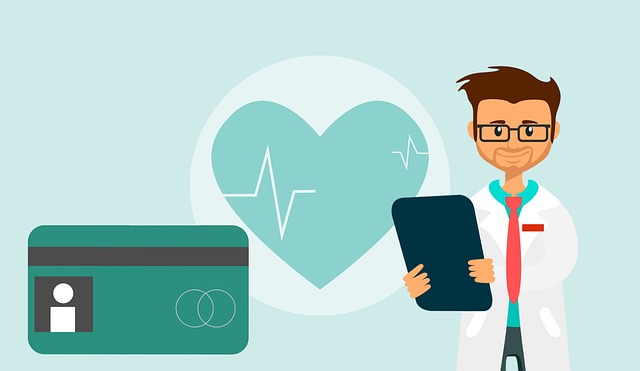
For most students, Spring 2021 is the first semester where you have finally gotten into the groove of taking classes completely online. The past year has been a challenge, but we are ready to face it head on this time around. Through trial and error or cautionary tales, we have all learned how we work best while being stuck at home. That being said, it never hurts to be reminded of some tips and tricks from those who are experiencing it too!
Here are four tips for taking online classes that might help you experience a better year.
For many of us, getting to class on time meant leaving your house early. I used to leave an hour before class started so that I could drive to campus in time to park, walk to the classroom, and prepare my notes. Not having that commute time means I get an extra hour every morning to spend however I would like! This is a great time to focus on yourself and check in with your mental health. Try meditating or reading a few chapters of a book you like. Being inside from morning to night can take a toll on your emotional wellness. Taking a walk in your neighborhood or getting in a nice stretch in the fresh air can change your perspective on the day ahead.
Life pre-pandemic was filled with strict routines for me. I got up at the same time each day, packed my lunch, had my morning coffee, and so on. The first month working and taking classes from home was a challenge as I was so out of sync with my normal day to day schedule. One of the greatest changes I made this past year was to create at home routines that mimicked my life before. I could still wake up early and prepare my lunch ahead of time. I could still enjoy my morning cup of coffee like I did before, even if I spent the whole day sitting by my coffee maker. Sticking with a routine can help you feel productive, stay on task, and break up the monotony of staying at home.
Just like how a routine can keep you accountable, having set times for different aspects of your life is key. When you are living your life in one setting all the time, it can be easy for things to overlap. For example, when you attend class in the living room it is simple to go ahead and open up your computer 15 minutes early. “Why not? I am ready anyway” you might say, but don’t get caught up in actions like these! Creating boundaries in your life is more important than ever so that you don’t become overwhelmed and burnt out. Set aside certain times for work, school, and rest so that they don’t extend over into one another. Just like how you wouldn’t catch up on sleep during class, you shouldn’t catch up on work during relaxation times.
At the start of my quarantine, I tried to use up all my free time learning new things. I taught myself how to sew, tried to pick up a new language, and baked every type of bread imaginable. As time went on, though, I found myself losing steam. While you may find yourself with more time in your days, you don’t necessarily have to fill it up with productivity. Taking breaks and allowing yourself to breathe is vital. I often forget that despite all the time that has passed, we are still living through a historical event and a global pandemic. For your health and your sanity, allow yourself to rest and recuperate. You can read our page on Emotional Wellness During the COVID-19 Outbreak for some more insight.
While you spend your days at home, you can also check out our ISI Live Events! We come to you live with ISI’s own, Sally McLeod, to talk about topics international students face everyday. You can watch previous lives on our YouTube channel and sign up for reminders about future events.

Covid-19 numbers are continuing to soar in the United States and around the world, but as a new year is upon us there is also good news! Many countries are getting their first doses of the Covid vaccine. While taming this virus hasn’t been easy, this has definitely shined a bright light at the end of this tunnel. In this blog, we will discuss the different approved vaccines, who is eligible, and what to expect when it comes to coverage on their insurance plan.
In the United States, there are three vaccines that have received emergency authorization: Pfizer-BioNTech’s COVID-19 vaccine, Moderna’s COVID-19 vaccine, and the most recent Janssen/Johnson & Johnson COVID-19 vaccine. These three vaccines are being rolled out throughout the US, with a possibility of more on the way.
According to the CDC, there are two more vaccines that are undergoing Phase 3 Clinical Trials and may get emergency authorization in the near future depending on their success. These vaccines in Phase 3 trial are the AstraZeneca’s COVID-19 vaccine and Novavax’s COVID-19 vaccine.
As more people are learning about the vaccine, let’s take a moment to explore each approved vaccine, what to expect, and it’s effectiveness:
Type of vaccine: mRNA
Approved ages: 16 years of age and older
Number of shots: 2 shots, 21 days apart
This was the first vaccine on the market, and showed to be 95% effective. There are two shots given in the upper arm muscle, twenty-one days apart. The most common side effects are pain, swelling, and redness where the shot was administered, as well as headaches, tiredness and chills throughout the body (which was more common after the second shot). The CDC recommends that if you have had a severe or immediate allergic reaction (anaphylaxis) or if you are allergic to PEG or polysorbate, you should not get this vaccine.
Type of vaccine: mRNA
Approved ages: 18 years of age and older
Number of shots: 2 shots, 28 days apart
This vaccine was approved shortly after the Pfizer vaccine, and has had major distribution throughout the US. Based on clinical trials, this vaccine has shown to be 94.1% effective after two doses. Like the Pfizer vaccine, there are also two shots given but 28 days apart, and the shot is administered in the upper arm muscle. The most common side effects are pain, swelling, and redness where the shot was administered, and headaches, tiredness and chills throughout the body (which was more common on the second shot). The CDC recommends that if you have had a severe or immediate allergic reaction (anaphylaxis) or if you are allergic to PEG or polysorbate, you should not get this vaccine.
Type of vaccine: Viral vector
Approved ages: 18 years of age and older
Number of shots: 1 shot
This is the most recent vaccine on the market, and showed to be 63% effective in clinical trials. While the efficacy is lower than the other two vaccines, experts say that it is hard to compare side-by-side since the J&J vaccines was conducted during higher rates of COVID-19 vaccines and tested in populations with the variants such as the UK and South African strains. Also, unlike the other two vaccines, this one is what they call “one and done” meaning that there is only one shot administered in the upper arm muscle. Studies have also shows that the side effects are reduced with this vaccine, however the most common side effects are pain, swelling, and redness where the shot was administered, as well as headaches, tiredness and chills throughout the body. The CDC recommends that if you have had a severe or immediate allergic reaction (anaphylaxis) or if you are allergic to polysorbate, you should not get this vaccine.
Most side effects occur 7 days after the shot, and if you are having discomfort, the CDC recommends talking to your doctor about over-the-counter medication such as ibuprofen or acetaminophen. Additionally, they recommend drinking plenty of liquids and to wear light clothes if you experience fever-like symptoms and to apply a cold wet rag to the area where the shot was administered to reduce discomfort. Exercising the arm which received the shot can also help with pain.
As many people around the world are anxiously awaiting to get the vaccine, and while demand continues to outpace supply, governments around the world are having to make tough decisions about who will get the vaccine and when. The good news is that production continues to ramp up, and more vaccines are on the way.
In the United States, the decision on who will get the vaccine and when has been largely left to each state. Because of the decentralized nature of the roll out, you may need to contact your local Department of Health to get more specifics for your area.
The CDC recommendation on the roll out of the vaccine is divided into phases which include:
For most international students, the vaccine is available in many states already. The current administration predicts that every adult in the United States over 18 years old will be eligible for the vaccine by April 19th, 2021. The best way to check if you’re eligible for the COVID-19 vaccination is to contact the department of health in your city or county to confirm your eligibility and find free vaccination sites.

The Covid vaccine is not currently available for purchase at local pharmacies, clinics or hospitals. At this time, the only way to get the vaccine in the United States is to be a designated group as determined by the state you are residing in. Any vaccines that were purchased with U.S. taxpayer dollars – so any vaccines you get through your Department of Health – will be given at no cost.
Since the Covid-19 vaccine is currently only being paid for by governments at this time, there should be no current need to file a claim. However, when the vaccine is later offered to the general public and no longer exclusively funded by governments, we may start to see clinics, pharmacies, and other health care facilities start charging fees for the vaccine. If this is the case, then it’s important to review your insurance plan benefits and exclusions to confirm whether the vaccine is covered. Timing on the roll out of this is still unknown and insurance companies around the world are continuing to monitor this.
It is also important to note that it is unlikely that an international student would be eligible for the vaccine at this time as many states are working on vaccinating those who fall into Phase 1a, 1b, and 1c. When this does open up to more individuals, however, we will have more clarity and information on the vaccination process. International students who plan on studying abroad, however, may want to check the availability in their home country before traveling since their home country’s policy may be different.
As time goes on, supply will be expanded, more people will be eligible for the vaccine, and more information about the process will be clarified. The good news is that 2021 should look different than 2020.
The holiday season is fast approaching and as an international student, this time of year can be difficult. This time last year you probably were worrying about making it home for the holidays after a long finals season, or maybe thinking about what to get your roommate as a gift! This year, however, as the pandemic continues to affect our lives, the holiday season might look a little different. No matter how you are spending the season, here are a few tips for how to stay healthy and happy over the holiday break.
Having to stay abroad during the holidays, without your family to spend time with, can be disheartening. However, not being able to fly home saves you a lot of money! This year why not get yourself something you have always wanted? After the year you’ve had you deserve some self love. Finish up your finals and treat yourself to a reward.
While you might be physically by yourself this year, in the age of technology we are never truly alone. Being able to talk to your family and friends face to face and make it feel like you are right there with them. Plan a time to have a virtual holiday party with your loved ones by accessing a free Zoom or Google Meet online room. You can cook, dance, and celebrate together without worrying about COVID-19.
Everybody’s favorite part of the holiday season is the traditions they uphold year after year with their friends and family. Maybe in your house you always cook a big meal, sing special songs together, or play a fun game! No matter what you celebrate, it is important to keep your traditions going this year. You can even use this time to make some new traditions to pass on in years to come.
Make sure that you are taking care of yourself and your needs during this time. It is always a good idea to check in with yourself and see how you are feeling. For a lot of students, this might be the first time you spend the holidays by yourself and that can take a major toll on your emotional wellness. While it is okay to feel upset about your situation, you don’t want your mental health to suffer. Try learning some breathing techniques to keep yourself balanced or follow an online meditation video to put things into perspective. If necessary, you can always sign up for virtual therapy or counseling. Sometimes, your school might even offer it for free! If not, be sure to check with your insurance provider to see if this is something you will need to pay out of pocket.
For more information on emotional wellness during the COVID-19 pandemic, click the link below.
Let us know how you are spending this holiday season and check out our social media channels for more!

For the 15th year InternationalStudent.com has hosted their annual Travel Video Contest. This year, in light of Covid-19 the theme was altered, and students shared a glimpse of their international education pursuits during the pandemic. InternationalStudent.com was pleased to announce the TVC: Life After Lockdown winners on November 20th – the last day of International Education Week. If you missed the announcement of who walked away with a prize, you can get caught up here!
Viewers’ Choice Winner ($1,000):
“Story of My Life” by Larissa Silveira
The Viewers’ Choice Winner is determined by votes from visitors on InternationalStudent.com. This year visitors were able to choose their favorite video from the nearly 120 submitted entries around the world and chose “Story of My Life”. Larissa not only received $1,000 for being a fan favorite, but she also received an automatic entry into the final round of the contest.
The contest winners were determined from the list of 10 finalists by the InternationalStudent.com judges panel. Congratulations to each of the winners!
Third Place Winner ($250):
“Dear 2021” by Julia De Camargo Correa
Julia shared her message to 2021, hoping that it brings with it the study abroad dream she has been preparing for in the Netherlands.
Second Place Winner ($500):
“The Home of an International Student” by Aashna Singh
Having to trade her studies in New York for isolation in North Carolina due to the pandemic, Aashna takes us on her journey of social distancing and online classes.
First Place Winner ($4,000):
“In the Light of Covid-19” by Fiqah Rahman
A passionate storyteller from Brunei and current student at NYU, Fiqah highlights the light she found during the pandemic- and how it has helped carry her through. Although her international journey hasn’t been what she expected, she was able to find the positive in what has been a rocky road for many during the year.
If you would like to see what other international students and exchange participants have been up to and experiencing during the pandemic, check out some of the other 2020 TVC: Life After Lockdown entries!

As you’ve surely noticed by now, the healthcare system in the United States is a bit tricky. Agents, insurance carriers, PPO networks, — surely they’re all the same thing, right? Unfortunately not, but we will be going through what these mean and how they work together to make your insurance plan work.
We, at ISI, are insurance agents. Insurance agents typically offer multiple plans from different insurance carriers, and can help you select an appropriate plan that would suit your situation. The main insurance carriers that we work with are Tokio Marine HCCMIS, International Medical Group (IMG), Seven Corners, GeoBlue, and Point Comfort Underwriters. We can answer questions about the benefits of the plans, help you purchase the plan, and help you through the claims filing process. We are also happy to help you cancel your plan, extend your plan, and send you information about your plan such as your ID card, visa letter, and other policy documents.
Insurance carriers are the companies that actually issue your insurance policy and will pay medical bills for your eligible medical expenses. The insurance carrier is the company that will collect your premium for your plan, and issue refunds if you cancel your plan. The insurance carrier will also be able to verify benefits for a specific treatment when you are at the doctor’s office.

When you are trying to go to a doctor’s office for a visit, the doctor’s office probably will not recognize the names of the insurance carriers that we use, like Tokio Marine HCCMIS, IMG, or Point Comfort Underwriters. Luckily, our plans are Preferred Provider Organization (PPO) plans. A Preferred Provider Organization is essentially a group of doctors, hospitals, physicians, and other service providers who are contracted and agree to a standard price list for common services. Many of our plans use the UnitedHealthcare PPO Network, which is one of the largest PPO networks in the United States. A doctor’s office may not recognize the name of our insurance carriers, however they will know whether or not they are a part of the PPO network. If the doctor’s office does accept the PPO network that your plan uses, the doctor’s office will be considered “in-network”. Going to an in-network doctor will allow the doctor’s office to directly bill the insurance carrier. This means fewer out of pocket costs for you at the time of service.
After visiting the doctor, you will need to file a health insurance claim in order to have your eligible medical expenses covered. Typically, this involves filling out a short claims form which details why you went to the doctor, and attaching any receipts or bills that you may have received from the doctor’s office. These then need to be sent into the insurance carrier. Please feel free to reach out to your insurance agent, and we are happy to guide you through the claims filing process or you can go to your Student Zone to start the claim process.

While insurance agents can assist you through the claims filing process, insurance agents do not have access to your claims information, due to a medical privacy law in the United States called HIPAA. This law essentially allows your personal medical information to only be shared with people that you explicitly name. When filling out a claims form, you will sign a HIPAA authorization form for the Insurance company, so that they can access your relevant medical information for your visit to the doctor.
As puzzling as all of this is, ISI works closely to ensure seamless coverage to make the process as painless as possible for international students. Please feel free to reach out to us with any questions that you may have!

This year we are launching a Holiday Video Contest where we can learn all about your traditions, memories, favorite recipes, and more. Show us whatever you would like to film about your holiday season! Some topic suggestions will be shared in the following month on our social media pages if you need some inspiration. The best part is, when you submit a video you gain the chance to win a $25 gift card sent right to your email.
We can’t wait to hear from you. Want to learn how to participate? Here are the contest rules:
We want your holiday season to be full of great memories, let us be one of them this year. If you have any questions about the contest please send us a message on Facebook and we will get back to you.
*Please note that entering the contest means you agree to your video being shared on the International Student Insurance social media pages and on our blog.

The last thing you heard about growing up in a catholic household in South America, if you heard about it at all, were topics like sex or sexually transmitted diseases (STD). I remember the first and only time I heard about sex education in Colombia was one day in 4th grade at my catholic school. They’ve invited a few experts and had us watch a short documentary on why abstinence was the only way to avoid STD’s. Up to that point, no one addressed what sex or STDs were, only that they were bad for your health.
In the US, these topics are addressed more frequently and more openly. For a person that comes from a very conservative household, it was a bit of a cultural shock to hear people talk about sex and sexually transmitted diseases in such a manner. Those subjects remain tabooed in many parts of my home country to this date. However, it is important to be knowledgeable about these subjects as an international student wherever you go so you can protect yourself and stay safe during your international experience.
So let’s start with defining what a sexually transmitted disease (or infection) is:
An STD (sexually transmitted disease) or STI (sexually transmitted infection) are diseases or infections that can only be spread through infected body fluids or skin. As their name states, generally they are contracted when someone has sex.
According to a report from the US Centers for Disease Control (CDC), there were over 2.4 million combined cases of STDs in 2018 in the US. Women between the ages of 15 to 24 years old account for 44% of reported cases of Chlamydia, men accounted for 86% of reported cases of Syphilis, and Gonorrhea diagnoses have almost doubled among gay and bisexual men in the past five years.

A study done in 2014 by the University of Cincinnati examined Asian college students’ overall knowledge of sex and STD’s. The results indicated that overall knowledge of these subjects in male students was very low. The study also found that students who had lived in the US for at least 3 years held significantly higher knowledge of these subjects than their counterparts. As you can see, part of your international experience is likely to expose you to more effective sex education when it comes to preventative action.
Protecting yourself from an STD or an STI is the best way to ensure you don’t have a bad experience in a foreign country. Here are some tips to help you stay safe:
It’s always best to make sure you are covered for STD’s and STI’s by your insurance plan. Not all insurance plans are created equal so be sure to contact your insurance company and confirm your benefits. Here are some of our plans that include coverage for testing and treatment of STD’s and STI’s, including HIV, like any other new condition:
| Navigator Plan | Cigna Global | Xplorer Plan |
|---|---|---|
| Learn More | Learn More | Learn More |
In the unfortunate event that you are faced with an STD, be sure to seek out medical treatment as soon as possible and follow your doctor’s advice. With the increased cases of COVID-19, telemedicine might be offered through your insurance plan and most doctors are able to give you initial guidance if you are worried about a sexual transmitted disease or infection.
We’re pleased to announce the new Patriot Exchange plan, which is now available for purchase on our website.
The Patriot Exchange plan is an excellent option for international students or scholars, on F-1 and J-1 visas and this plan will also allow them the option to add dependents to the policy. Additionally, the dependents could also apply on their own for this plan. This would mean that an F-2 or J-2 visa holder would be able to purchase the plan without needing an F-1 or J-1 visa holder to be the main policyholder!

This plan is designed to provide you with coverage for new, eligible illnesses or injuries that occur after the effective date of the plan and aren’t tied to any of the plan’s exclusions.
Some highlights of the plan include:
To review the benefits table, please click here.
This plan offers a $5,000,000 policy maximum but it will allow the insured person to choose their policy maximum per injury/illness, as well as the deductible. The policy maximum options would be $50,000, $100,000, $250,000, or $500,000 and the deductible options are $0, $100, $250 or $500 and they would apply per every new condition. After the deductible has been paid, the plan offers 100% of coverage when you visit providers within the UnitedHealthcare network.
Another important highlight of this plan would be that visits to the student health center, walk-in or urgent care clinics would be subjected to a copay and the deductible would not apply! For visits to the student health center, the copay would only be $5, while for the Urgent care center and walk-in clinics, it would be $50 and $20, respectively. If your plan has a $0 deductible, none of these copays would apply.
IMPORTANT: J-1/J-2 visa holders would need to purchase a plan with a policy maximum of at least $100,000 per injury/illness in order to be compliant with the insurance requirements set by the US Department of State for J visa holders..
If you’re not sure which plan is the best option for you, you can always contact our friendly customer service representatives, which will be more than happy to assist you in finding the best plan option for your personal needs.
When it comes to considering which insurance plan is right for you, it is important to familiarize yourself with the insurance plan’s network of doctors, hospitals or clinics – often referred to as a provider network. A provider network is essentially a list of doctors, hospitals and clinics where you can get medical attention.
![]() Before purchasing an insurance plan, take the time to find out where you can go, and make sure you can get to them easily. If you already have a relationship with a doctor, you may want to confirm that they are part of the plan’s network otherwise filing a claim may be more difficult (and depending on your plan, you may have to pay more out of pocket).
Before purchasing an insurance plan, take the time to find out where you can go, and make sure you can get to them easily. If you already have a relationship with a doctor, you may want to confirm that they are part of the plan’s network otherwise filing a claim may be more difficult (and depending on your plan, you may have to pay more out of pocket).
 Our Student Secure plan works with the UnitedHealthcare network, one of the largest networks in the U.S.
Our Student Secure plan works with the UnitedHealthcare network, one of the largest networks in the U.S.
Health insurance costs in the US are very expensive, so many insurance companies will negotiate the rates directly with doctors, hospitals and clinics. As part of this arrangement, you will often pay less out of pocket and filing a claim will be much easier. Before even enrolling in an insurance plan, it’s important to search what options you have, and make sure that you can easily get there if you need to seek medical attention.
Let’s take a closer look at the advantages of going to a doctor, hospital, or clinic that is in your insurance plan’s network.
One of the advantages of going inside the network is that your insurance company has agreed to a discounted rate with that provider. Because of this, the insurance company will typically pass on the savings to you, and you will pay less out of pocket. Your deductible, copay and/or coinsurance will typically be less that what you would pay if you went to a provider that is not in your insurance plan’s network.
Another advantage is that your insurance plan will typically only cover what is Usual Reasonable and Customary (URC). URC is the average cost of treatment in that area. If you go inside the plan’s network, the rates are agreed upon by both the provider and the insurance company, and there is no concern that they are billing you above that cost. However, if you go outside the network, the provider can charge whatever they’d like for treatment. That means that if your provider bills you more than the URC, you could be paying an unexpected amount out of pocket.
Another advantage of going in-network is that there is a streamlined process for direct billing to your insurance company. This means that you don’t have to pay for your medical expenses up front (you will still need to pay the deductible or copay at the time of visit), and can instead have the provider bill the insurance company directly to pay for any covered expenses. You will need to present your ID card at the time of treatment, and your doctor, hospital or clinic will send the bills directly to the insurance company to be paid. While there is great benefit in direct billing, you may still need to submit some paperwork before your claim can be processed so be sure to check with your insurance company.
Now that we’ve outlined the importance of going inside your plan’s provider network, we will turn our attention to how to find providers inside your plan’s network.

Many insurance plans will have an online search tool where you can find all of the participating providers in your geographic location. If you have a specific doctor or clinic that you would like to go to, you can always give them a call just to make sure they accept the network of the plan you intend to purchase. Your insurance ID card will oftentimes have the logo of the network that the plan uses, so that you can let your doctor know the network your plan uses.
Our most popular insurance plans for international students, the Student Secure, Patriot Exchange and Student Health Advantage plans, use the UnitedHealthcare network. The UnitedHealthcare network is one of the largest networks in the United States, has providers in all 50 states, and provides an easy-to-use online search tool to locate providers within your area!
Learn more about insurance provider networks by checking out our related articles on our Insurance Explained section.